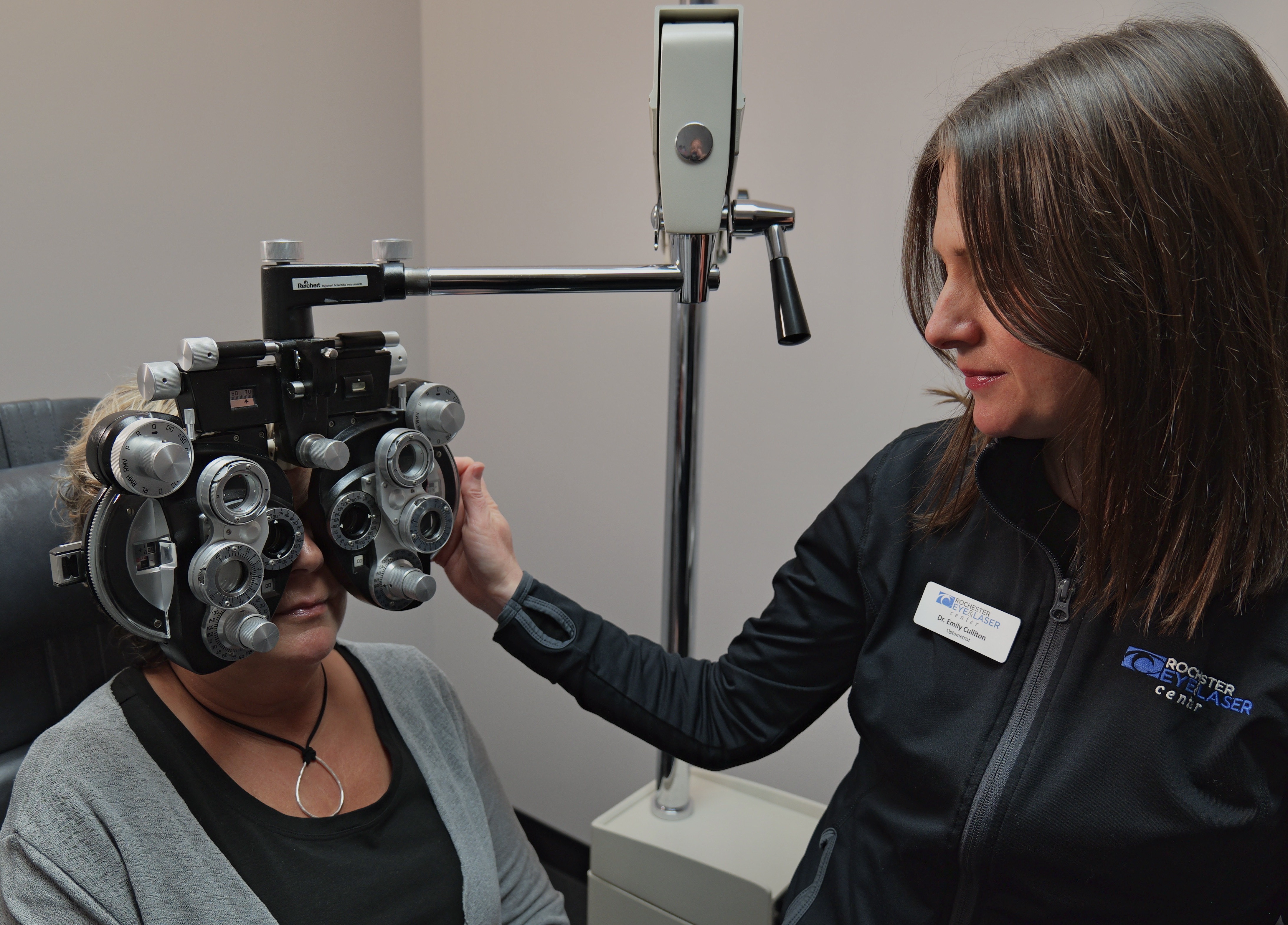Do I need eyedrops before & after LASIK?
If you are consideringLASIK eye surgery, you probably have a lot of questions. One of the most common questions we hear at the Rochester...
3 min read
 The Rochester Eye & Laser Team
:
Oct 13, 2023 7:00:00 AM
The Rochester Eye & Laser Team
:
Oct 13, 2023 7:00:00 AM

Night glare is a common occurrence after undergoing Laser Eye Surgery. Although it may be perceived as a side effect, it is actually an integral part of the eyes' healing process. Every patient who undergoes Laser Eye Surgery will experience some form of night glare as their eyes recover.
Night glare symptoms, including the appearance of halos and starbursts, are a natural result of the cornea swelling after Laser Eye Surgery. While this may initially sound concerning, it is important to understand that this swelling is actually a beneficial response from the body to expedite the healing process of the eyes.
Consequently, it is important to note that night glare is not a side effect that only affects certain individuals. Rather, it is a common occurrence that is experienced by all patients, regardless of their original prescription, age, experience, or the specific treatment method used.
It typically takes approximately three months for this swelling to settle. For most patients, this will also be the point at which night glare symptoms subside; however, if some residual night vision glare persists after this time, testing may be performed to determine how this can be resolved.
Although side effects of Laser Eye Surgery are relatively rare and usually minor, some patients may experience more noticeable effects. Among these effects, night-time issues such as halos and starbursts are quite common. These visual disturbances can occur for various reasons.
One possible reason is that the laser treatment may not have fully corrected the shape of the eye during the initial procedure, leaving some residual long- or short-sightedness. Additionally, minor astigmatism may still be present. In such cases, a follow-up procedure or wearing glasses at night can often help alleviate these symptoms.
The size of a patient's pupils can also play a role in the severity of night glare. When exposed to low light conditions, our pupils naturally dilate to allow more light into the eye. However, if a patient's pupils dilate beyond the area of the cornea that was treated, it can lead to glare.
Fortunately, in many cases, this can be prevented through a thorough assessment before the surgery. This assessment includes measuring the size of the dilated pupils to determine the specific area of the cornea that requires treatment. Based on these measurements, the clinic can determine if they can effectively treat a large enough area with the laser. If treatment is not possible, the patient would be disqualified from undergoing Laser Eye Surgery.
Another cause of glare and halos at night is if the laser treatment was off-center during the procedure, known as off-centered ablation. While this is a less common cause, it can be avoided by choosing a reputable clinic and ensuring you have a properly qualified and experienced surgeon.
Prevention and Management
While night glare is one of the most common side effects associated with Laser Eye Surgery, in most cases, this can be prevented with the help of a rigorous assessment prior to surgery. This process allows your surgeon to gather the necessary measurements and information to develop a treatment plan tailored specifically to your eyes.
The importance of this stage in your Laser Eye Surgery journey cannot be overstated. Choosing a clinic with access to the most up-to-date technology and expertise can also help to make sure the risk of night glare is minimised. For example, Wavefront technology – which comes as standard in our LASIK treatment – may significantly reduce the risk of glare, halos, and night vision difficulties.
If you have already had treatment and are experiencing halos and starbursts at night related to your pupil size – don’t fret. There are some techniques that can help to reduce the disturbance caused by night glare.
Some people find that medicated eye drops, which prevent the pupils from fully dilating, can be helpful. What’s more, for those who have trouble driving at night, simply keeping the overhead light on inside the car can stop the pupils from dilating so much. This can minimize the intensity of glare from outside light sources.
If you’ve already had Laser Eye Surgery and you have glare and halos at night because of your pupil size, don’t fret—there are a few techniques that can help.
If you have any more questions with regard to night glare or other Laser Eye Surgery side effects, get in touch with a member of our team – we are happy to help! Interested in Laser Eye Surgery treatment? Book a consultation today.
Do you have questions about LASIK? Register for our Virtual LASIK Seminar and ask Dr. Ken Lindahl all your LASIK questions.

If you are consideringLASIK eye surgery, you probably have a lot of questions. One of the most common questions we hear at the Rochester...

Certain lifestyle factors can impact the suitability of individuals for laser eye surgery. For instance, those involved in contact sports or...

CONTOURA® Vision is state-of-the-art, topography-guided LASIK treatment that is the latest FDA approved LASIK eye surgery technology available in the...